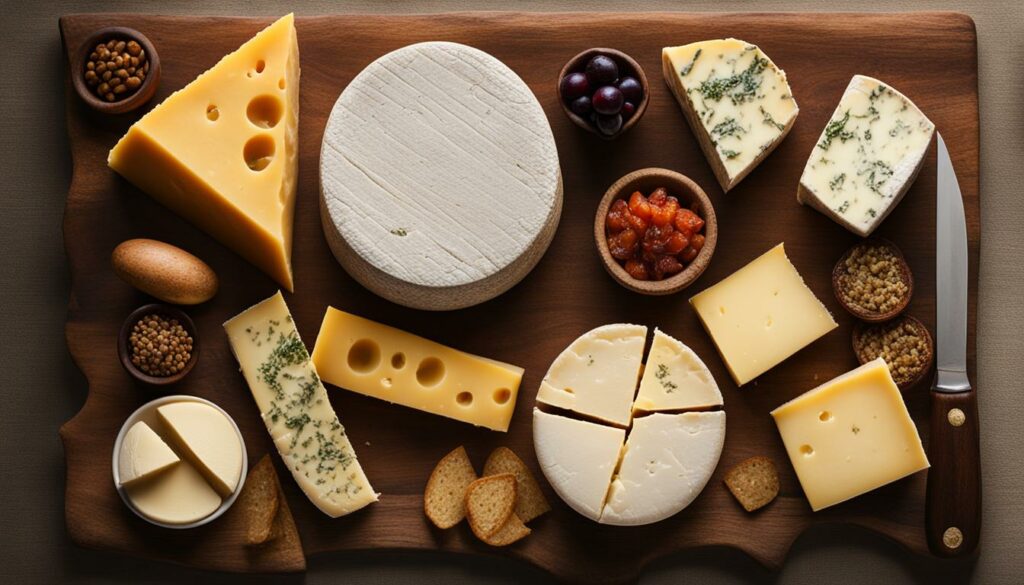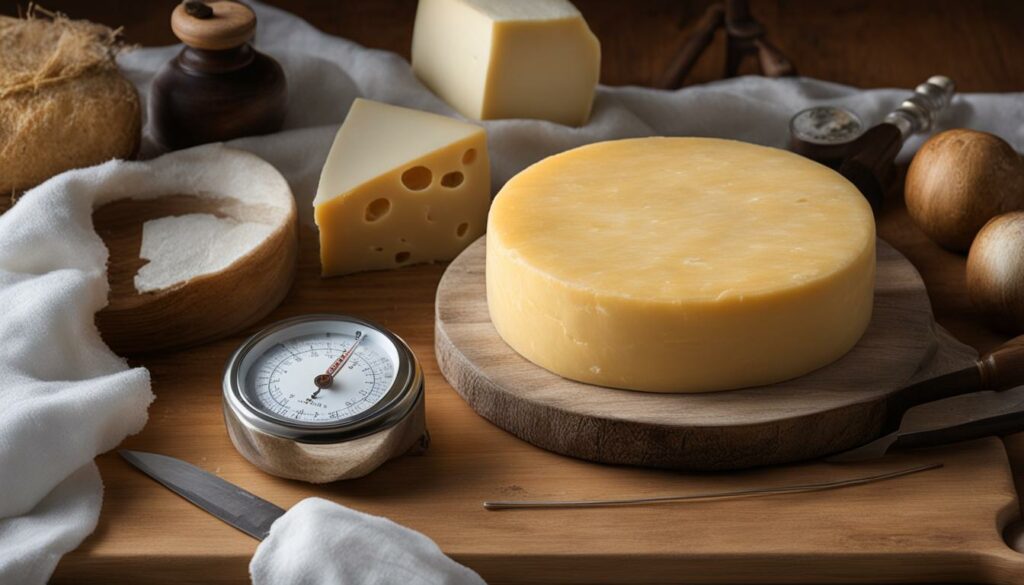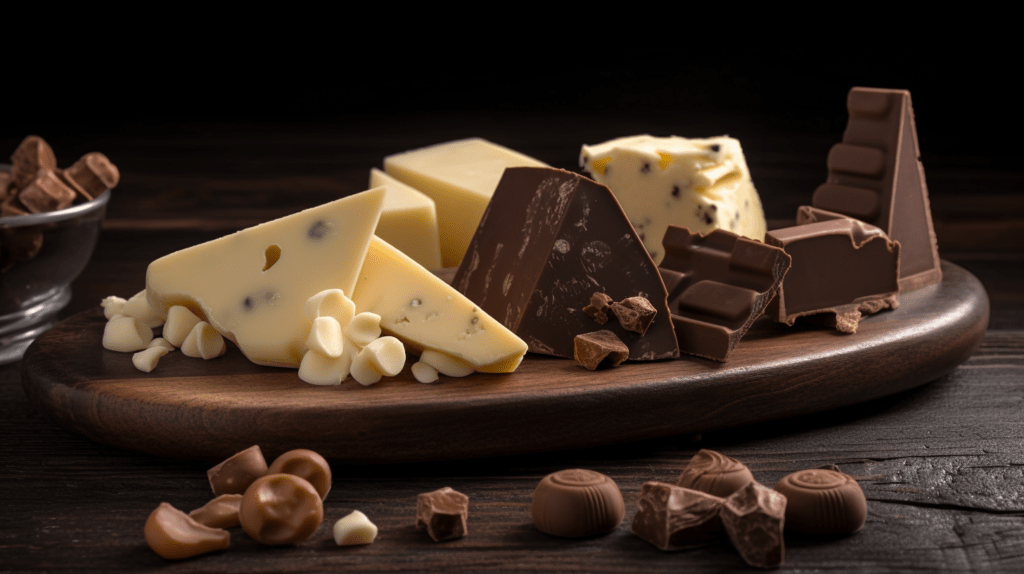Welcome to your guide to the exquisite world of Baladi cheese! If you’re a fan of authentic, traditional cheeses, then Baladi cheese is a must-try for you. Known for its rich and creamy flavor, Baladi cheese is a beloved staple in Egyptian cuisine.
Made from a combination of goat’s, cow’s, and sheep’s milk, Baladi cheese offers a unique taste that is favored by gourmet palates. This locally sourced, artisanal cheese is a testament to the craftsmanship and tradition of Middle Eastern cheese-making. Whether enjoyed on its own, incorporated into dishes, or paired with your favorite accompaniments, Baladi cheese promises to deliver a truly delightful experience.
Stay with us as we delve into the art of Baladi cheese preparation, explore its origin and characteristics, discover other Middle Eastern cheeses, and learn how to incorporate Baladi cheese into delicious recipes. We’ll also discuss the benefits of choosing locally sourced Baladi cheese and provide tips on finding the best Baladi cheese near you. Finally, we’ll show you how you can embark on your own cheese-making journey and make Baladi cheese right in your own kitchen.
So, get ready to savor the rich flavors and timeless tradition of Baladi cheese. Let’s dive in and discover the wonders of this gourmet delight together!
The Art of Baladi Cheese Preparation
Preparing delicious homemade Baladi cheese is a delightful culinary adventure. Whether you choose to use Full Cream Milk Powder or Liquid Whole Milk, the process is simple and rewarding. Let’s explore the step-by-step guide to creating your own Baladi cheese.
Making Baladi Cheese with Full Cream Milk Powder
If you have Full Cream Milk Powder on hand, you can easily transform it into a delectable Baladi cheese. Follow these instructions:
- Dissolve the milk powder in water in a large pot, creating a smooth mixture.
- Heat the mixture to 50°C, maintaining a gentle simmer.
- Add white vinegar to the pot, stirring gently to separate the curds from the whey.
- Once the curds have formed, carefully collect them in a cheesecloth.
- Squeeze the cheesecloth to remove excess fluid from the curds.
- Transfer the curds to a bowl and place a weight on top to expel additional whey.
- Save the whey for brining the cheese later.
- Strain the remaining whey to make it clear, then pour it over the cheese in a deep container.
Your homemade Baladi cheese is now ready to be refrigerated and savored. Remember to consume it within 2 weeks to enjoy its optimal freshness.
Creating Baladi Cheese with Liquid Whole Milk
If you prefer using Liquid Whole Milk, the process remains quite similar:
- In a large pot, heat the liquid whole milk to 50°C.
- Add white vinegar to the pot, stirring gently to encourage the separation of curds and whey.
- Collect the formed curds with a cheesecloth, gently squeezing out any excess liquid.
- Place the curds in a bowl and apply a weight to release additional whey.
- Save the whey for later use in brining.
- Strain the remaining whey to achieve clarity, then pour it over the cheese in a deep container.
Your homemade Baladi cheese is now complete. Refrigerate it promptly and enjoy its creamy goodness within the next two weeks.
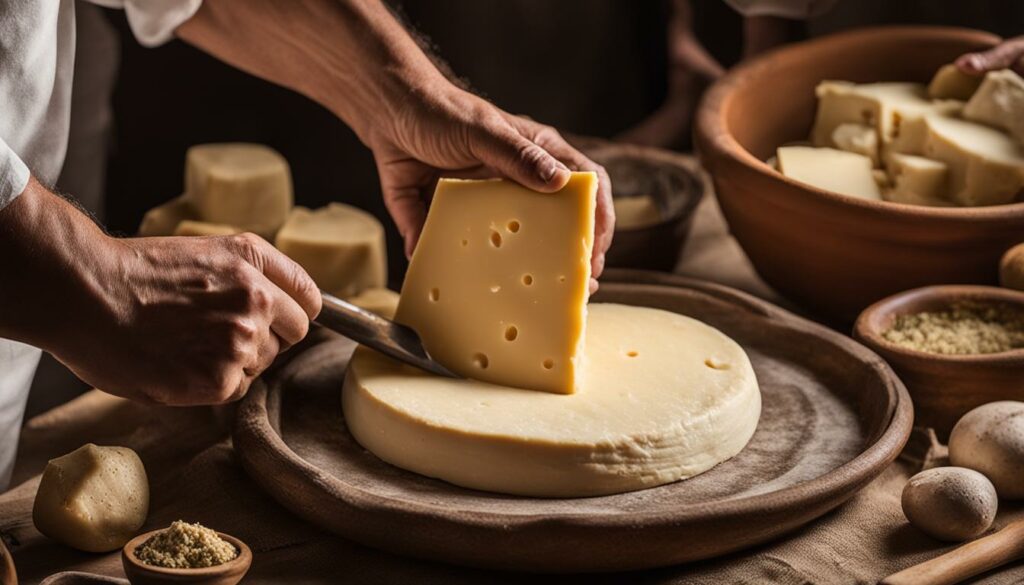
“The process of crafting Baladi cheese at home is both satisfying and fulfilling. By selecting between Full Cream Milk Powder or Liquid Whole Milk, you can create a batch of this traditional Middle Eastern delight that suits your taste preferences perfectly.”
The Origin and Characteristics of Baladi Cheese
Baladi cheese, a Middle Eastern cheese also known as Jibneh Khadra, has a rich history and unique qualities that make it a beloved staple in traditional Middle Eastern cuisine. Its origins can be traced back to Lebanon, where it is believed to have been crafted by local shepherds in the country’s high mountain regions.
Made from a carefully curated mixture of goat’s, cow’s, and sheep’s milk, Baladi cheese offers a delightful blend of flavors and textures. This local cheese is often produced using unpasteurized milk, ensuring an authentic and distinct taste. Its soft and dense consistency resembles that of Akkawi cheese, while its flavor profile has sweet and slightly salty notes.
When enjoying Baladi cheese, you can indulge in a variety of delectable ways. Its versatility lends itself well to both simple and elaborate preparations, making it a delightful addition to any meal. Whether you pair it with local bread, drizzle it with olive oil and herbs, or savor it as part of a traditional Middle Eastern breakfast with tomatoes, cucumbers, olives, and bread, Baladi cheese adds a touch of traditional Middle Eastern flavor to your culinary experience.
In order to preserve its freshness and best taste, Baladi cheese is recommended to be consumed within three days of preparation. This ensures that you enjoy it at its peak quality and flavor.
Immerse yourself in the rich cultural heritage of Middle Eastern cuisine by embracing the origin and characteristics of Baladi cheese. Experience the authentic flavors and textures that have been passed down through generations, commemorating the traditions and craftsmanship of local cheese-making.
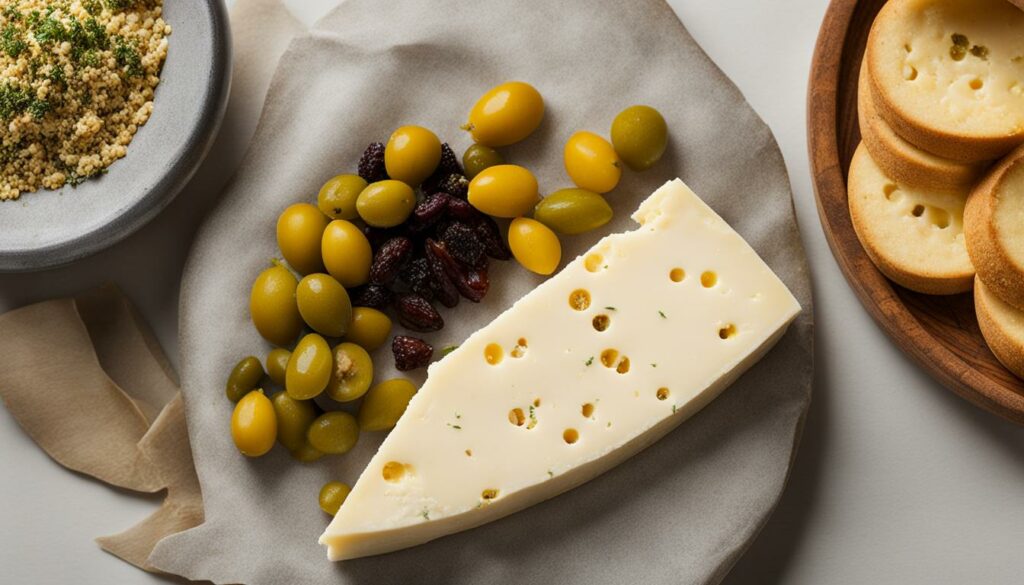
The Characteristics of Baladi Cheese
| Origin | Key Ingredients | Texture | Flavor |
|---|---|---|---|
| Middle East, particularly Lebanon | Goat’s, cow’s, and sheep’s milk | Soft and dense | Sweet and slightly salty |
Exploring Other Cheeses from the Arab World
In addition to Baladi cheese, the Arab world offers a wide variety of cheeses with distinct flavors and textures. From tangy and crumbly Feta cheese to creamy and versatile Labneh cheese, there is a cheese to suit every taste bud. Let’s take a closer look at some popular examples:
Feta Cheese
The beloved Greek cheese, Feta, has become a staple in the Arab world as well. Made from sheep’s milk, Feta cheese offers a tangy and salty flavor that pairs perfectly with salads, pastries, and grilled vegetables.
Akkawi Cheese
Akkawi cheese is a soft, white cheese with a mild and slightly salty taste. It has a smooth and elastic texture, making it ideal for melting and stretching. Akkawi cheese is often used in savory pastries, sandwiches, and desserts.
Shanklish Cheese
Shanklish cheese is a popular Lebanese cheese known for its strong and tangy flavor. It is typically made from cow’s or sheep’s milk and is aged for several months, giving it a crumbly texture. Shanklish cheese is commonly used in salads, meze platters, and sandwiches.
Nabulsi Cheese
Nabulsi cheese is a semi-soft, white cheese with a slightly salty taste. It originates from the Palestinian city of Nablus and is known for its unique texture and distinctive flavor. It is often enjoyed in traditional Middle Eastern desserts like kunafa.
Labneh Cheese
Labneh cheese, also known as strained yogurt cheese, is a creamy and tangy cheese made from strained yogurt. It has a thick and spreadable consistency, similar to cream cheese. Labneh cheese is commonly enjoyed with olive oil and herbs, served as a dip, or used as a topping for flatbreads and salads.
Jibneh Arabieh Cheese
Jibneh Arabieh, or Arab cheese, is a popular cheese variety in the Arab world. It is often made from a combination of goat’s and sheep’s milk, giving it a rich and tangy flavor. Jibneh Arabieh cheese is versatile and can be used in various dishes, including pastries, sandwiches, and salads.
Halloumi Cheese
Halloumi cheese is a semi-hard, unripened cheese that originated in Cyprus but is commonly enjoyed throughout the Arab world. It has a unique property of not melting when heated, making it perfect for grilling or frying. Halloumi cheese has a salty and slightly tangy flavor, with a chewy and creamy texture.
Majdouli Cheese
Majdouli cheese is a traditional cheese from Iraq known for its distinct shape and texture. It is typically made from buffalo milk and has a creamy and slightly tangy taste. Majdouli cheese is often enjoyed on its own or used as a topping for bread and pastries.
Jibneh Mshallaleh Cheese
Jibneh Mshallaleh, or fried cheese, is a popular cheese dish in the Arab world. It is made by frying white cheese until it becomes golden and crispy. Jibneh Mshallaleh cheese is often served as an appetizer or meze and is enjoyed with bread and fresh vegetables.
These are just a few examples of the diverse and flavorful cheeses found in the Arab world. Each cheese brings its own unique touch to traditional Middle Eastern cuisines, adding depth and richness to countless dishes. Whether you’re a cheese aficionado or just discovering the world of Arab cheeses, there is a wide range of flavors and textures to explore and savor.
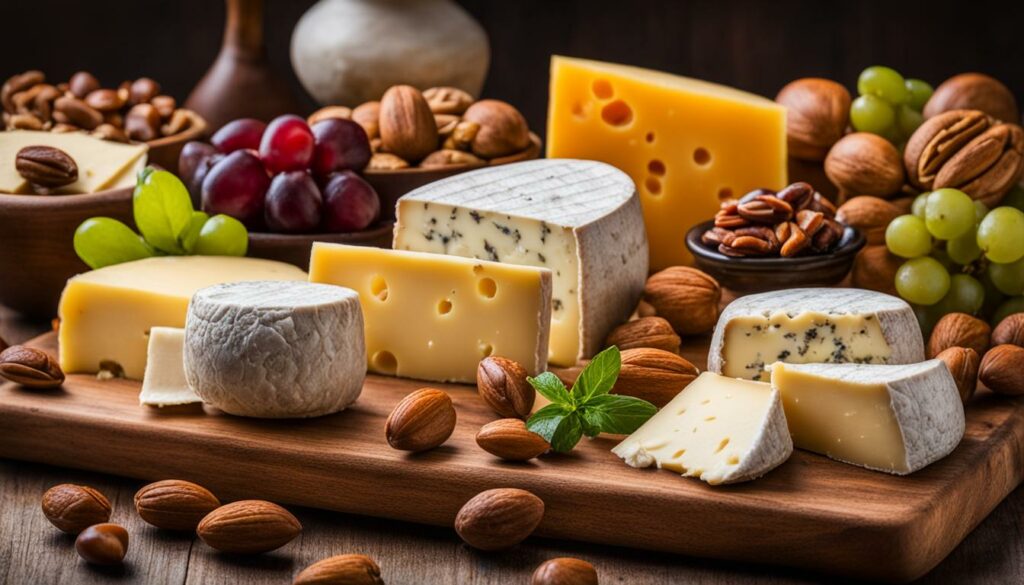
Incorporating Baladi Cheese in Arab Cuisine
Baladi cheese is a versatile ingredient that can be enjoyed in numerous ways in Arab cuisine. Whether you’re looking for simple recipes or want to elevate your dishes with bold flavors, Baladi cheese offers endless possibilities. Here are some popular ways to incorporate Baladi cheese:
Baladi Cheese Recipes
From savory appetizers to mouthwatering entrees, Baladi cheese can be the star ingredient in a variety of delicious recipes. Here are a few ideas to get you started:
Spinach and Baladi Cheese Stuffed Chicken Breast: Impress your guests with tender chicken breasts filled with a flavorful mixture of sautéed spinach and crumbled Baladi cheese. Serve it with a side of roasted vegetables for a complete and satisfying meal.
Baladi Cheese and Tomato Galette: This rustic pastry combines the creamy richness of Baladi cheese with juicy tomatoes and fragrant herbs. The combination of flavors is simply irresistible.
Baladi Cheese and Mint Salad: Toss fresh mint leaves, crisp cucumbers, and juicy cherry tomatoes with chunks of Baladi cheese for a refreshing salad that’s perfect for summertime gatherings.
Baladi Cheese with Bread
One of the simplest and most delightful ways to enjoy Baladi cheese is by spreading it on fresh bread. The creamy and tangy flavors of the cheese pair perfectly with the crispness of bread. Here are a few popular bread options:
- Pita Bread: Warm up some pita bread, split it open, and slather it with Baladi cheese. Add a drizzle of olive oil and a sprinkle of fresh herbs for extra flavor.
- Baguette: Slice a baguette and top each slice with Baladi cheese. Toast it in the oven until the cheese is melted and bubbly, then garnish with your favorite herbs.
- Focaccia: Spread Baladi cheese on a slice of freshly baked focaccia bread. Add roasted garlic, olives, and a sprinkle of sea salt for a delicious Mediterranean-inspired treat.
Baladi Cheese with Olive Oil and Herbs
The combination of Baladi cheese, olive oil, and herbs creates a delightful flavor profile that complements various dishes. Here’s a simple recipe to enjoy:
| Ingredients | Instructions |
|---|---|
| Baladi cheese, sliced | 1. Place the sliced Baladi cheese on a serving platter. |
| Olive oil | 2. Drizzle olive oil over the cheese. |
| Fresh herbs (such as mint, parsley, or thyme) | 3. Sprinkle the fresh herbs over the cheese. |
| Salt and pepper (to taste) | 4. Season with salt and pepper, if desired. |
This simple yet elegant dish can be enjoyed as a standalone appetizer or served alongside your favorite Middle Eastern dishes.
Baladi Cheese in Middle Eastern Breakfast
In Middle Eastern cuisine, breakfast is a cherished mealtime. Baladi cheese is a popular addition to a traditional Middle Eastern breakfast spread, which typically includes a variety of flavorful ingredients.
Here’s an example of a Middle Eastern breakfast featuring Baladi cheese:
- Tomatoes: Slice fresh tomatoes and arrange them on a platter.
- Cucumbers: Peel and slice cucumbers, then add them to the platter.
- Olives: Include a selection of briny olives for added depth of flavor.
- Bread: Serve freshly baked bread, such as pita or flatbread.
- Baladi Cheese: Slice Baladi cheese and place it on the platter.
Allow your guests to build their own breakfast plates, combining the various ingredients to their liking. The creamy and tangy flavor of Baladi cheese pairs perfectly with the freshness of the vegetables and the richness of the olives.
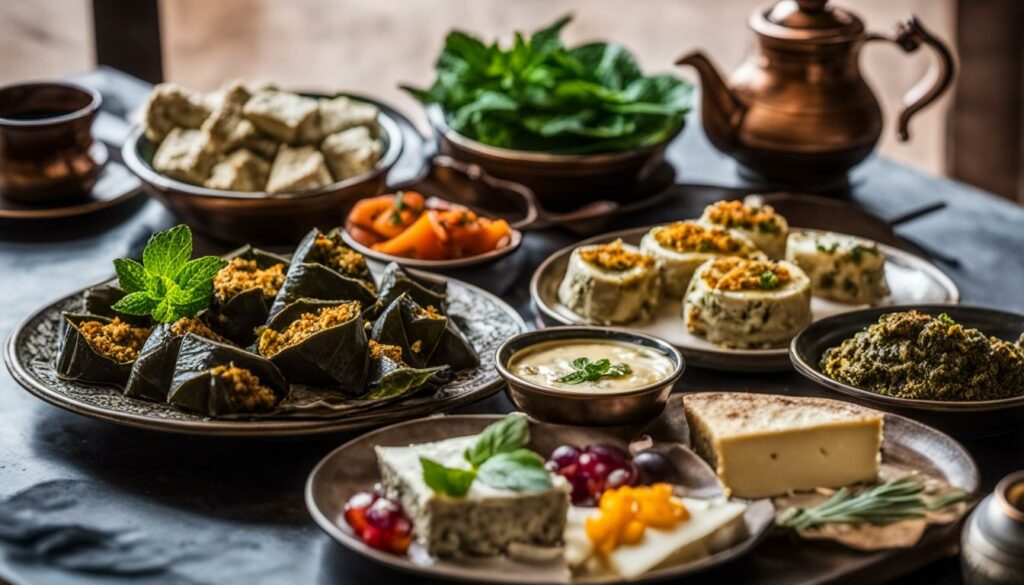
The Benefits of Locally Sourced Baladi Cheese
Opting for locally sourced Baladi cheese offers several benefits. Firstly, supporting local producers helps sustain traditional cheese-making techniques and promotes cultural heritage. Locally sourced Baladi cheese is often made with care and attention to detail, resulting in a higher quality product. Artisanal Baladi cheese is more likely to be made from fresh, high-quality milk, contributing to its rich and creamy taste. Additionally, supporting local producers helps boost the local economy and reduces the carbon footprint associated with imported cheeses.

| Benefits of Locally Sourced Baladi Cheese |
|---|
| 1. Preservation of traditional cheese-making techniques and cultural heritage |
| 2. Higher quality product made with care and attention to detail |
| 3. Rich and creamy taste derived from fresh, high-quality milk |
| 4. Support for the local economy |
| 5. Reduced carbon footprint compared to imported cheeses |
By choosing locally sourced Baladi cheese, you not only indulge in the authentic flavors of this traditional Middle Eastern delight but also contribute to the preservation of cheese-making traditions and the growth of local communities.
Finding the Best Baladi Cheese
Locating the best Baladi cheese may require some exploration. Local cheese shops or Middle Eastern grocery stores are excellent places to start your search. These establishments often carry a variety of authentic cheeses, including Baladi cheese.
It is recommended to inquire about the source and quality of the cheese to ensure you are getting a genuine and delicious product. Ask the cheese shop staff or grocery store employees for recommendations on the best Baladi cheese they offer.
If you’re a cheese enthusiast, consider seeking recommendations from local cheese enthusiasts or online communities. Joining forums or groups dedicated to cheese appreciation can provide valuable insights on where to find the best Baladi cheese.
Remember, the best Baladi cheese is likely to be locally sourced and made using traditional cheese-making techniques. By supporting local producers, you not only get to enjoy the finest quality cheese but also contribute to the preservation of cultural heritage.
Explore your local cheese shops and Middle Eastern grocery stores to discover the wide range of Baladi cheese options available. Take the opportunity to taste and compare different brands and varieties. With a bit of research and experimentation, you’ll find the perfect Baladi cheese to satisfy your palate.
Five Best Baladi Cheese Brands
| Brand | Origin | Taste | Availability |
|---|---|---|---|
| Mediterranean Delights | Lebanon | Rich and creamy | Local cheese shops, Middle Eastern grocery stores |
| Nile Valley Dairy | Egypt | Smooth and savory | Online retailers, specialty cheese shops |
| Baladi Bites | Lebanon | Salty and tangy | Local farmers’ markets |
| Levant Cheese Co. | Lebanon | Buttery and nutty | Specialty cheese shops, Middle Eastern grocery stores |
| Sahara Dairy | Jordan | Creamy and mild | Local cheese shops, Middle Eastern grocery stores |
These five Baladi cheese brands offer a diverse range of flavors and textures, each with its own unique characteristics. Try them all to find your favorite and enjoy the authentic taste of Baladi cheese.
Making Baladi Cheese at Home
Making Baladi cheese at home can be a rewarding and fulfilling experience. Not only do you get to enjoy the rich and creamy flavors of this traditional Middle Eastern cheese, but you also have the opportunity to customize its taste and texture according to your preferences. By following the recipe provided earlier, you can easily recreate the authentic flavors of Baladi cheese in the comfort of your own kitchen.
Whether you choose to use Full Cream Milk Powder or Liquid Whole Milk, the cheese-making process remains relatively simple. It’s important to ensure that all your equipment and ingredients are clean and sterile to maintain the quality and safety of the cheese. Following proper food safety guidelines is crucial, as it guarantees the production of delicious and safe Baladi cheese.
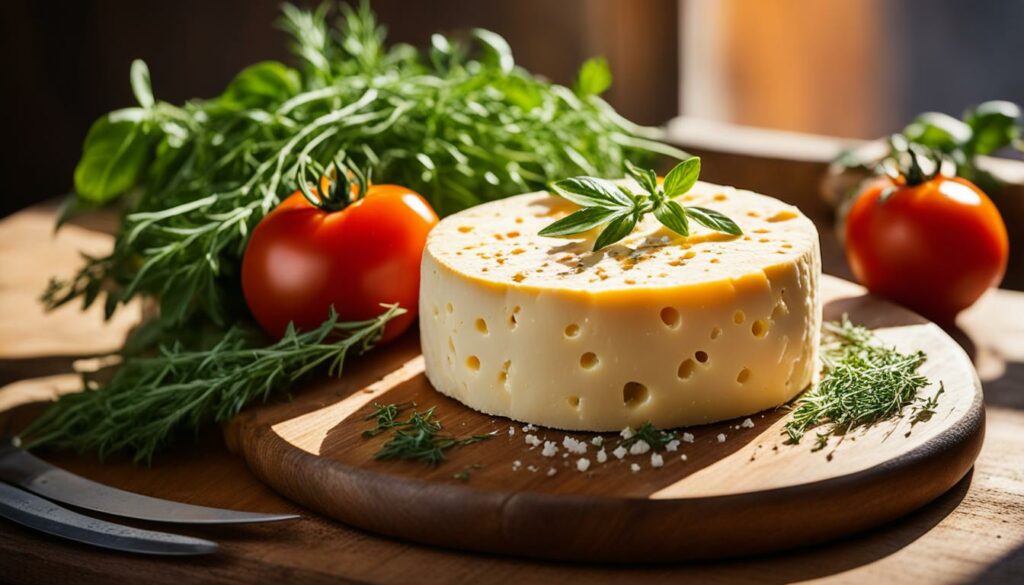
Homemade Baladi Cheese Recipe
Ingredients:
- Full Cream Milk Powder or Liquid Whole Milk
- Water
- White Vinegar
Instructions:
- Dissolve the Full Cream Milk Powder in water in a large pot or use Liquid Whole Milk directly.
- Heat the milk mixture to 50°C.
- Add white vinegar to the heated milk, stirring gently to separate the curds from the whey.
- Once the curds have formed, carefully collect them in a cheesecloth.
- Squeeze the cheesecloth to remove excess fluid from the curds.
- Transfer the cheese to a bowl and gently press down on it with a weighted object to expel any remaining whey.
- Strain the whey, making it clear, and pour it over the cheese in a deep container.
- Refrigerate the cheese and consume it within 2 weeks for the best flavor.
Enjoy your homemade Baladi cheese!
Exploring the World of Middle Eastern Cheeses
The Arab world offers a diverse range of cheeses, each with its own unique characteristics and flavors. Exploring the world of Middle Eastern cheeses can introduce you to new taste experiences and culinary traditions. From the tangy and creamy Feta cheese to the elastic and chewy Halloumi, there is something to suit every palate. Many Middle Eastern cheeses can be enjoyed on their own, incorporated into various recipes, or paired with traditional accompaniments. Embark on a culinary adventure and discover the rich tapestry of flavors that Middle Eastern cheeses have to offer.
Cheese Varieties in the Arab World
Get ready to tantalize your taste buds with the wide range of traditional Middle Eastern cheeses. Here are some popular cheese varieties you must try:
| Cheese Variety | Description |
|---|---|
| Feta Cheese | A tangy and salty cheese made from sheep’s or goat’s milk, often crumbled over salads or incorporated into baked dishes. |
| Akkawi Cheese | A mild and slightly salty cheese with a smooth and elastic texture, perfect for melting and commonly used in pastries and sandwiches. |
| Shanklish Cheese | A fermented cheese with a tangy and pungent flavor, typically coated in herbs and spices and aged for several months. |
| Nabulsi Cheese | A semi-hard cheese with a slightly salty taste, often enjoyed soaked in brine and used in traditional sweets like knafeh. |
| Labneh Cheese | A creamy and tangy cheese made from strained yogurt, commonly spread on bread or used as a dip or topping. |
| Jibneh Arabieh Cheese | A soft and creamy cheese with a mild and slightly tangy flavor, usually spread on bread or used in desserts. |
| Halloumi Cheese | An elastic and chewy white cheese that can be grilled or fried without melting, perfect for salads, sandwiches, or as a standalone dish. |
| Majdouli Cheese | A spreadable cheese with a rich, buttery taste, often enjoyed with bread or used as a filling in pastries. |
| Jibneh Mshallaleh Cheese | A semi-hard cheese with a bold and salty flavor, typically enjoyed grilled or fried and served with honey or preserves. |
These cheese varieties showcase the diversity and culinary heritage of the Arab world. Whether you prefer soft and creamy, tangy and salty, or elastic and chewy, Middle Eastern cheeses offer a multitude of flavors and textures for you to savor.
The Cultural Significance of Baladi Cheese
Baladi cheese holds significant cultural importance in the Middle East. It is deeply rooted in traditional Middle Eastern cuisine and reflects the region’s culinary heritage. Its production methods, using locally sourced milk and following traditional techniques, connect present-day cheese enthusiasts to generations of cheese-makers before them. Baladi cheese represents a link to cultural identity and traditions, reminding people of the rich flavors and techniques passed down through generations. The appreciation of Baladi cheese goes beyond its taste and texture, encompassing the cultural significance it holds within Middle Eastern culinary heritage.
Conclusion
Baladi cheese offers a taste of tradition and craftsmanship, bringing the flavors of the Middle East to gourmet palates. Whether enjoyed on its own, incorporated into dishes, or paired with traditional accompaniments, Baladi cheese provides a rich and creamy experience.
Exploring the world of Middle Eastern cheeses can open doors to new flavors and culinary traditions, deepening your understanding and appreciation of diverse cultures. Whether you choose to seek out locally sourced Baladi cheese or embark on making it at home, the allure of authentic Baladi cheese is sure to captivate your taste buds.
Indulge in the tradition and essence of Baladi cheese, a truly timeless delight.
FAQ
What is Baladi cheese?
Baladi cheese, also known as Jibneh baladi or Jibneh khadra, is a firm and sliceable white cheese popular in Lebanon and commercially available everywhere. It is known for its rich and creamy taste, making it a favorite among gourmet palates.
How is Baladi cheese made?
Baladi cheese is made from a combination of goat, cow, and sheep’s milk. It is often handmade, resulting in a unique flavor and texture. To make Baladi cheese at home using Full Cream Milk Powder, start by dissolving the milk powder in water in a large pot. Heat the mixture to 50°C and then stir in white vinegar to separate the curds from the whey. Once the curds have formed, they are collected in a cheesecloth and squeezed to remove excess fluid. The cheese is then placed in a bowl and weighted down to expel additional whey. The whey can be used for brining the cheese later. Strain the remaining whey to make it clear before pouring it over the cheese in a deep container. The cheese can be refrigerated and should be consumed within 2 weeks.
Where does Baladi cheese come from?
Baladi cheese is believed to have originated in the Middle East, particularly in Lebanon. It is made from a mixture of goat’s, cow’s, and sheep’s milk, giving it a unique flavor and texture. The name “Baladi” means local cheese and is often made by local shepherds in high mountain regions.
How does Baladi cheese taste?
Baladi cheese has a soft and dense texture, resembling Akkawi cheese, and offers a sweet and slightly salty taste. It is often described as rich and creamy, making it a popular choice in Middle Eastern cuisine.
What are some other cheeses from the Arab world?
Some other popular cheeses from the Arab world include Feta cheese, Akkawi cheese, Shanklish cheese, Nabulsi cheese, Labneh cheese, Jibneh Arabieh cheese, Halloumi cheese, Majdouli cheese, and Jibneh Mshallaleh cheese.
How can Baladi cheese be used in Arab cuisine?
Baladi cheese can be enjoyed in numerous ways in Arab cuisine. It can be enjoyed with local bread, drizzled with olive oil, or as part of a traditional Middle Eastern breakfast served with tomatoes, cucumbers, olives, and bread. It can also be incorporated into various recipes, such as salads, pastries, and grilled dishes.
What are the benefits of locally sourced Baladi cheese?
Opting for locally sourced Baladi cheese offers several benefits. Supporting local producers helps sustain traditional cheese-making techniques and promotes cultural heritage. Locally sourced Baladi cheese is often made with care and attention to detail, resulting in a higher quality product. Artisanal Baladi cheese is more likely to be made from fresh, high-quality milk, contributing to its rich and creamy taste. Additionally, supporting local producers helps boost the local economy and reduces the carbon footprint associated with imported cheeses.
Where can I find the best Baladi cheese?
Local cheese shops or Middle Eastern grocery stores are excellent places to start your search for the best Baladi cheese. These establishments often carry a variety of authentic cheeses, including Baladi cheese. It is recommended to inquire about the source and quality of the cheese to ensure you are getting a genuine and delicious product. Additionally, seeking recommendations from local cheese enthusiasts or online communities can be helpful in finding the best Baladi cheese.
Can I make Baladi cheese at home?
Yes, making Baladi cheese at home can be a rewarding experience. It allows you to customize the flavor and texture of the cheese while gaining a deeper appreciation for the traditional cheese-making process. The recipe provided earlier outlines the steps for making Baladi cheese using both Full Cream Milk Powder and Liquid Whole Milk. It is important to ensure that all equipment and ingredients are clean and sterile during the cheese-making process. Following proper food safety guidelines will ensure the production of safe and delicious Baladi cheese.
What other Middle Eastern cheeses should I explore?
The Arab world offers a diverse range of cheeses, each with its own unique characteristics and flavors. Exploring the world of Middle Eastern cheeses can introduce you to new taste experiences and culinary traditions. From the tangy and creamy Feta cheese to the elastic and chewy Halloumi, there is something to suit every palate. Many Middle Eastern cheeses can be enjoyed on their own, incorporated into various recipes, or paired with traditional accompaniments.
What is the cultural significance of Baladi cheese?
Baladi cheese holds significant cultural importance in the Middle East. It is deeply rooted in traditional Middle Eastern cuisine and reflects the region’s culinary heritage. Its production methods, using locally sourced milk and following traditional techniques, connect present-day cheese enthusiasts to generations of cheese-makers before them. Baladi cheese represents a link to cultural identity and traditions, reminding people of the rich flavors and techniques passed down through generations. The appreciation of Baladi cheese goes beyond its taste and texture, encompassing the cultural significance it holds within Middle Eastern culinary heritage.

